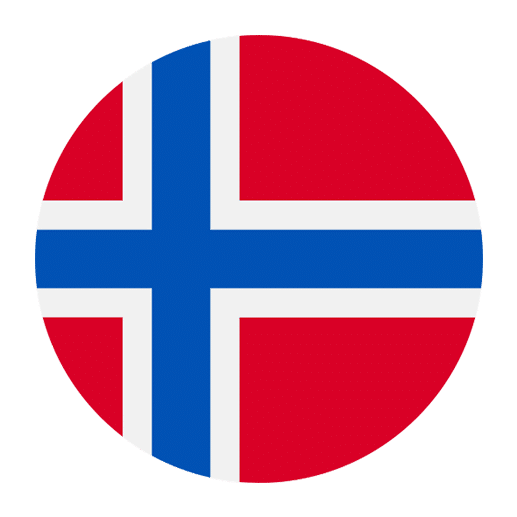Norwegian, a North Germanic language spoken primarily in Norway, plays an integral role in the preservation and promotion of the country’s rich cultural heritage. As a language deeply intertwined with national identity, Norwegian not only reflects the historical and societal evolution of Norway but also serves as a vessel for cultural expression and continuity. This article delves into the significance of Norwegian in maintaining and celebrating Norway’s cultural heritage, exploring its historical roots, linguistic features, and contemporary relevance.
Historical Roots of the Norwegian Language
The Norwegian language has a storied history that mirrors the broader historical trajectory of Norway itself. The linguistic landscape of Norway has been shaped by various influences, ranging from the Old Norse language of the Vikings to the more recent imprints of Danish and Swedish. Understanding these historical roots is crucial in appreciating the role of Norwegian in cultural heritage preservation.
Old Norse Origins
The origins of the Norwegian language can be traced back to Old Norse, the language spoken by the Vikings during the early medieval period. Old Norse was a North Germanic language that served as the linguistic foundation for several Scandinavian languages, including Norwegian, Icelandic, and Faroese. During the Viking Age, Old Norse spread across Europe, leaving a lasting linguistic legacy.
The Middle Ages and the Influence of Danish
As Norway entered the Middle Ages, the country experienced significant political and cultural shifts, including the establishment of the Kalmar Union, which united Norway, Denmark, and Sweden under a single monarch. This period saw the gradual influence of Danish on the Norwegian language, particularly in written form. For centuries, Danish was the dominant written language in Norway, a legacy of the union with Denmark.
The Rise of Bokmål and Nynorsk
The 19th century marked a pivotal moment in the history of the Norwegian language with the rise of the Norwegian romantic nationalist movement. This movement sought to revive and celebrate Norway’s distinct cultural identity, leading to the emergence of two written standards: Bokmål and Nynorsk. Bokmål, derived from Danish-influenced Norwegian, became the more widely used standard, while Nynorsk, based on rural dialects, represented a purer form of Norwegian. The coexistence of these two standards reflects Norway’s linguistic diversity and its commitment to preserving cultural heritage.
Linguistic Features of Norwegian
Norwegian is characterized by several linguistic features that distinguish it from other languages and contribute to its role in cultural heritage preservation. These features include its phonology, grammar, and vocabulary, which have evolved over centuries while retaining elements of the language’s Old Norse roots.
Phonology
Norwegian phonology is notable for its melodic intonation and distinctive vowel sounds. The language has nine vowel phonemes, which can be short or long, and a variety of diphthongs. This rich vowel system contributes to the musicality of the language, making it an important aspect of cultural expression, particularly in traditional music and poetry.
Grammar
Norwegian grammar is relatively straightforward, with a subject-verb-object (SVO) word order and a system of noun declensions that indicate number and definiteness. One of the most distinctive features of Norwegian grammar is its use of two written standards, Bokmål and Nynorsk, each with its own set of grammatical rules. This duality allows for a broader representation of regional dialects and cultural nuances, reinforcing the connection between language and cultural heritage.
Vocabulary
The Norwegian vocabulary is a blend of native terms and loanwords, reflecting the country’s historical interactions with other cultures. Many words have Old Norse origins, while others have been borrowed from Danish, Swedish, German, and English. This linguistic diversity enriches the language and provides a window into Norway’s historical and cultural exchanges.
Norwegian as a Medium of Cultural Expression
Language is a powerful medium of cultural expression, and Norwegian is no exception. It serves as a vehicle for literature, music, folklore, and other forms of artistic expression that are integral to Norway’s cultural heritage.
Literature
Norwegian literature has a rich tradition that dates back to the medieval sagas and continues to thrive in contemporary times. The sagas, written in Old Norse, are epic narratives that chronicle the adventures of Viking heroes and historical events. These ancient texts are not only literary masterpieces but also invaluable records of Norway’s cultural and historical heritage.
In the modern era, Norwegian literature has produced internationally acclaimed authors such as Henrik Ibsen and Knut Hamsun. Ibsen, often referred to as the father of modern drama, used the Norwegian language to explore complex social and psychological themes, while Hamsun’s novels capture the essence of rural Norwegian life. Contemporary authors like Karl Ove Knausgård continue this tradition, using Norwegian to tell deeply personal and culturally resonant stories.
Music and Folklore
Norwegian music and folklore are deeply rooted in the language. Traditional Norwegian folk music, known as “folkemusikk,” often features lyrics in Norwegian that convey stories of love, nature, and historical events. Instruments like the Hardanger fiddle, a traditional Norwegian string instrument, are integral to this musical tradition.
Folklore, including fairy tales and legends, is another important aspect of Norway’s cultural heritage. These stories, passed down through generations, are often told in the Norwegian language, preserving the linguistic and cultural nuances of the past. The work of folklorists like Peter Christen Asbjørnsen and Jørgen Moe, who collected and published Norwegian folk tales in the 19th century, played a crucial role in preserving this oral tradition.
The Role of Norwegian in Education and Media
Education and media are vital channels for the transmission and preservation of cultural heritage, and the Norwegian language plays a central role in both domains.
Education
The Norwegian education system places a strong emphasis on language learning, with Norwegian being the primary language of instruction. From an early age, children are taught to read and write in both Bokmål and Nynorsk, fostering an appreciation for the linguistic diversity of their country. The curriculum also includes the study of Norwegian literature, history, and culture, ensuring that students develop a deep understanding of their cultural heritage.
In addition to formal education, various language preservation initiatives aim to protect and promote regional dialects and minority languages. For example, the Sami people, an indigenous group in Norway, have their own language and cultural traditions. Efforts to preserve Sami languages through education and media are crucial in maintaining the cultural heritage of this minority group.
Media
Media, including television, radio, newspapers, and digital platforms, plays a significant role in the dissemination of the Norwegian language and culture. National broadcasters like NRK (Norwegian Broadcasting Corporation) produce content in Norwegian, ranging from news and documentaries to entertainment and cultural programs. This content not only informs and entertains but also reinforces the use of the Norwegian language in everyday life.
The advent of digital media has further expanded the reach of the Norwegian language, with online platforms and social media providing new opportunities for cultural expression and engagement. Websites, blogs, and podcasts in Norwegian allow individuals to share their stories, perspectives, and creative works, contributing to the ongoing preservation and evolution of the language.
Challenges and Opportunities
While the Norwegian language plays a crucial role in preserving cultural heritage, it also faces challenges and opportunities in the modern era.
Challenges
One of the primary challenges is the influence of globalization and the dominance of English as a global lingua franca. The widespread use of English in business, academia, and popular culture can sometimes overshadow the use of Norwegian, particularly among younger generations. This linguistic shift poses a risk to the preservation of cultural heritage, as language is a key component of cultural identity.
Another challenge is the potential decline of regional dialects and minority languages. As urbanization and modernization continue, there is a risk that smaller communities and their unique linguistic traditions may be marginalized or lost. Efforts to document and support these languages are essential in preserving the full spectrum of Norway’s cultural heritage.
Opportunities
Despite these challenges, there are numerous opportunities to strengthen the role of Norwegian in cultural heritage preservation. Technological advancements, such as digital archiving and language learning apps, provide innovative ways to document, share, and promote the Norwegian language. Virtual reality and augmented reality technologies can also create immersive experiences that bring Norway’s cultural heritage to life for a global audience.
Furthermore, cultural exchange programs and international collaborations offer opportunities to showcase Norwegian language and culture on the world stage. By promoting Norwegian literature, music, and art internationally, Norway can foster a greater appreciation for its cultural heritage and encourage the preservation of the language.
Conclusion
The Norwegian language is a cornerstone of Norway’s cultural heritage, serving as a bridge between the past and the present. Its historical roots, linguistic features, and role in cultural expression, education, and media underscore its significance in preserving and celebrating Norway’s rich cultural legacy. While challenges exist, the opportunities for promoting and preserving the Norwegian language are abundant. By embracing these opportunities and addressing the challenges, Norway can ensure that its linguistic and cultural heritage continues to thrive for generations to come.

